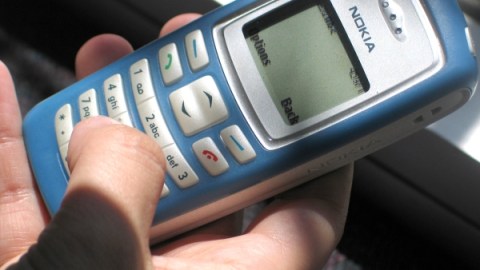Text Messages – The Least Common Denominator in the Classroom

Over the past two or three weeks I have noticed something really interesting. I got in contact with or read about at least six startups that were all working on kind of the same project: connecting teachers, students and parents via text messages. Those startups are namely SnappSchool, remind101, ClassParrot, ClassPager, Text2Teach and TruantToday.
Text messages, the old fashioned way of sharing status updated before Twitter (which interestingly enough started off as text message based service), Facebook, Google+ or group messaging apps. From inside the tech bubble this seems like an odd step back into the stone age. From the real world perspective it makes total sense.
A couple of days ago Darien Brown, co-founder and CEO of Wander (formerly YongoPal) shared an interesting insight on Twitter.
“By end of this month, 50% of Koreans will be smartphone users.”
This is pretty interesting taking into consideration that South Korea is always ahead in terms of tech adoption. According to a report by eMarketer earlier this year, smartphone adoption amongst mobile phone users will reach 73.3 million people in the US by the end of 2011.
According to the CTIA the total number of users of mobile phones in the US is 327,6 million which leaves us with more than 250 million people who own a mobile phone, e.g. people who can receive and send text messages but are not able to use smart phone applications, may it be iOS or Android.
And as smartphones are still rather expensive, let alone the data plans attached to them, it is clear that most kids who have a mobile phone won’t be smartphone users.
In the media coverage related to Steve Job’s passing an informative video surfaced that explains the idea behind those new education startups that focus on the technology most students have at hand. In the video embedded below Jobs says:
“You have to start with the customer experience and start working backwards to the technology.”
Of course, it is amazing what can be done on smartphones and tablet devices but the reality is still that most students don’t posses one of these devices. A teacher quote on remind101’s website says it best
“I teach 103 students and am able to access over 90% of them through this service.”
That means services based on text messages work for everybody or almost. The problem with education apps that are build for smartphones is to figure out on which of the major platforms to launch first. iOS or Android. And later on, when two versions are available how to connect both of them to one classroom environment. Text message work on all devices.
I think developed countries are very quick in labeling a technology as old-fashioned these days. We don’t test out the borders anymore. In India entire social networks work via text messages, for example SMS Gupshup and the famous mobile service M-Pesa out of Kenya changed the way people receive their loans and make their payments.
Picture: Morguefile user kahle





